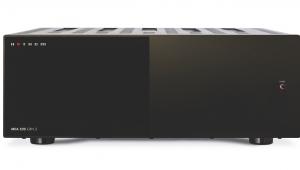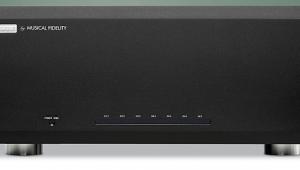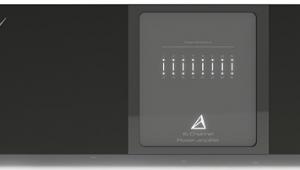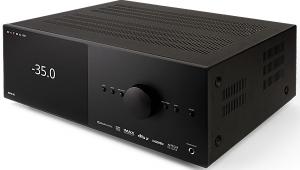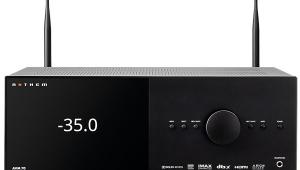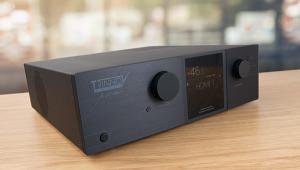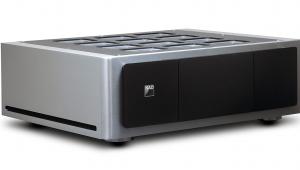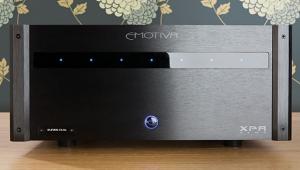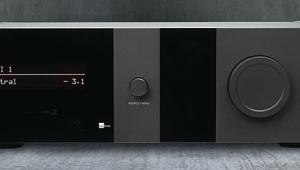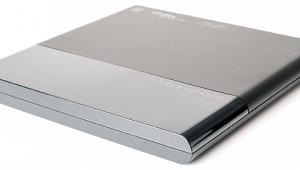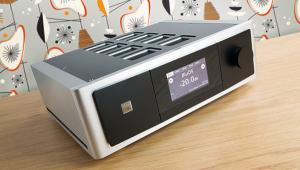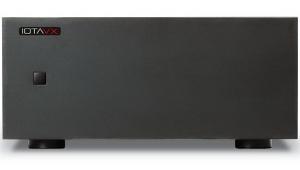NAD C 700 Streaming Amplifier with BluOS Review
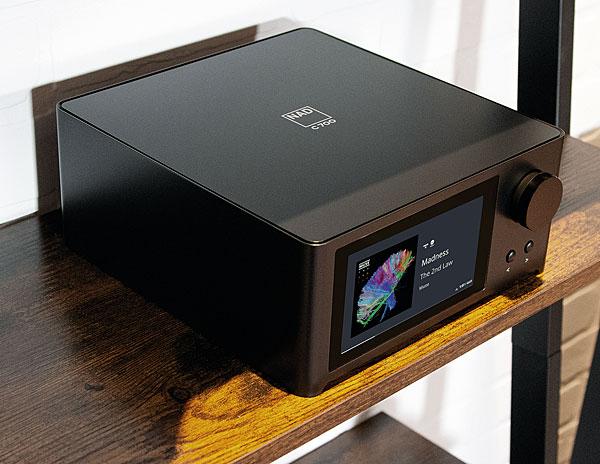
 NAD expands its lineup of hi-res streaming amplifiers with the C 700, a more affordable – but still well-featured – alternative to its Masters Series hardware. Mark Craven investigates
NAD expands its lineup of hi-res streaming amplifiers with the C 700, a more affordable – but still well-featured – alternative to its Masters Series hardware. Mark Craven investigates
Those who admired NAD's M10 two-channel, do-it-all streaming amplifier but were put off by the £2,200 price tag (see HCC #304) are clearly the target audience for the Canadian manufacturer's new C 700. Like the costlier Masters Series model, this compact component promises to drag your music playback into the 21st century via its hi-res capable BluOS streaming module, while chucking in a range of physical inputs for good measure, and then giving connected speakers a healthy punch of Class D amplification. Unlike the M10, however, it sells for £1,300.
Clearly some corners have been cut to take the specification of the M10 model and offer it at something approaching half the price. The most obvious of these, from perusing the product literature, is a drop in rated power output, down from 2 x 100W to 2 x 80W. Not an insignificant difference, but also not a serious reduction that would have me putting power-hungry loudspeakers to one side – especially knowing from past experience that NAD's amplification measurements are conservative rather than optimistic.
Yet there is a wrinkle to this. The M10 – now onto a V2 guise iteration that arrived last year – uses Hypex nCore Class D power modules, whereas the C 700 opts for less-advanced UcD devices. Additionally, the C 700 gets a lower-grade ESS DAC chip (the ES9010 rather than the M10's ES9028).
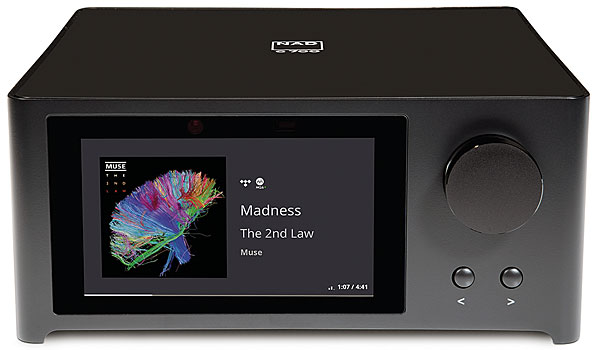
These under-the-hood differences are partly indicative of where the C 700 has been built to hit a price, but there's an even more obvious example that greets you when you switch it on. Gone is the near full-fascia touchscreen interface, here replaced by a 5in screen that will show you album art and menu options, but relies on adjacent navigation buttons and the C 700's volume knob (which also functions as a select button) to browse. So no more getting touchy-feely with the amp's display – although the associated BluOS app, which is not only your port of call for streamed music services, but can also manage physical source selection and various settings, still puts functionality at your fingertips.
The last main difference between the M10 and the C 700? This more affordable model doesn't feature Dirac Live integration. This automated EQ system is a boon on AV receivers with multiple channels to massage, but two-channel listeners tend to be more suspicious of its benefits, so I can see why it's been jettisoned here.
Such two-channel devotees would likely make use of the C 700's stereo analogue, digital and USB inputs, in addition to its wired and wireless streaming skills. Yet the amp also packs a subwoofer pre-out and an HDMI eARC connection, making partnership with a TV – and a 2.1 speaker setup – a possibility. Subwoofer crossover can be set between 40Hz and 200Hz, and there's a lip-sync delay function too.
Ready for The Rock
Hooked up to a pair of Monitor Audio Silver 500 7G floorstanders (see HCC #328), NAD's C 700 certainly didn't feel short of muscle and there was a dynamic attack – and sense of articulation – to its delivery that made it seem ripe for film and TV playback. In other words, this amp is responsive and loves a punch up.
A case in point: the toppling buildings and shattering glass of a good chunk of the soundtrack for earthquake thriller San Andreas (4K Blu-ray). Sat between the two MA floorstanders, and with a Velodyne DB-15 subwoofer stage right, the C 700 marshalled a stereo soundstage that was crackling with detail, from sharp, panicked screams inside a collapsing Los Angeles restaurant to the meatier, metallic operational sounds of The Rock's rescue helicopter. It was a wide, involving listen, with a strong centralised delivery of dialogue, and with the Velodyne in tow, the performance was fabulously full-range.
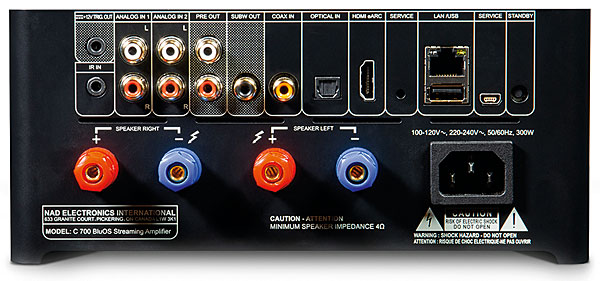
More sedate material, in the shape of La La Land (4K Blu-ray), puts less overt demand on NAD's amplification, almost to the point that this musical's soundtrack feels a bit 'after the Lord Mayor's show' following San Andreas' full-throttle audio. Yet the C 700 busies itself with capturing the nuances of dialogue and the ambience of scenes, and snapping into action when the song and dance numbers arrive. These benefit from its ability to convey instrumental textures and – with ensemble piece Another Day of Sun – lift and separate the numerous vocal parts to keep it all sounding fresh and distinct.
No one would buy the C 700 just to run their TV through if, of course, so it was back to the land of BluOS for some music replay. This streaming system, developed by parent company Lenbrook initially for its Bluesound brand, has plenty going for it, not the least the efficiency of the app controller. As someone already running BluOS hardware on my network (a Vault 2i server), setup of the C 700 was simply a matter of firing up the app and waiting a few seconds for it to locate and pair with the device. Starting from scratch wouldn't add much time to that either.
Using BluOS to send hi-res Tidal streams to the C 700, and opting for a sans subwoofer stereo system, resulted in an impressive performance, again one of speed, detail and dynamic punch. Of course, music listening tends to focus the mind on other elements, and it's true that this relatively affordable all-in-one comes up short on occasion compared to rival products with a more deliberate hi-fi focus. So, for example, the bass guitar of Chris Rea's Daytona (Tidal Master) lacked a little of the pure, rich tone I know it has, and the ticks and tocks of the track's percussion missed out on a layer of sparkle.
This isn't really a criticism, however. NAD's C 700 is a more than capable music machine and offers a feature list that many others can only dream of. It's perhaps not the obvious choice for a front end add-on to an AV receiver, as some of the functionality will likely become duplicated, but for a straightforward addition to a movie den, or as the master and commander of a stereo or 2.1 system, this is highly recommended. Unless, of course, you can't live without Dirac and a touchscreen interface.
HCC Verdict
NAD C 700
Price: £1,300
www.nadelectronics.com
We say: Compact, easy to use and with admirable power on tap, NAD's latest, most affordable BluOS streamer has real appeal. Just add speakers and enjoy.
Overall: 4.5/5
Specifications
ONBOARD POWER (CLAIMED): 2 x 80W (into 8 ohms) CONNECTIONS: 1 x HDMI eARC; 1 x optical digital audio input; 1 x coaxial digital audio input; 2 x analogue stereo phono inputs; 1 x subwoofer pre-out; 1 x stereo pre-out; Ethernet; USB; 12V trigger; IR input Integrated Services: Tidal; Qobuz; Spotify; Deezer; Amazon Music HD; internet radio via vTuner DIMENSIONS: 218(w) x 96(h) x 266(d)mm WEIGHT: 4.8kg
FEATURES: Hybrid Digital UcD Class D amplifier modules; BluOS high-resolution streaming system (with app); MQA decoding/rendering; two-way aptX HD Bluetooth; 5in colour display; Wi-Fi; subwoofer filter settings; supports Amazon Alexa, Apple Siri and Google Assistant voice control; Apple AirPlay 2; Spotify Connect; Tidal Connect; ES9010 DAC
 |
Home Cinema Choice #351 is on sale now, featuring: Samsung S95D flagship OLED TV; Ascendo loudspeakers; Pioneer VSA-LX805 AV receiver; UST projector roundup; 2024’s summer movies; Conan 4K; and more
|



